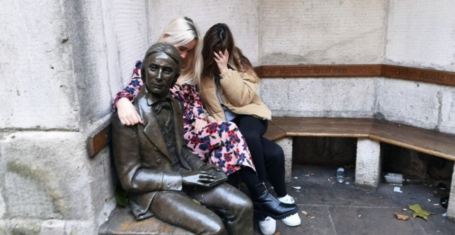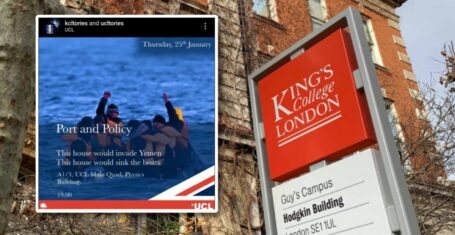
“Deaf woman hears for the first time” but is anybody really listening?
Why you should be wary of sharing those “inspirational” virals…
Growing up with a Deaf mother and father meant that I was brought up in two different cultures, neither particularly linked to nationality or ethnicity, but rather the cultures of those who hear and those who cannot.
My parents are both what the Deaf community would call very “oral”, often choosing to speak aloud alongside their use of sign language and are both very much part of the “hearing world”, with friends and colleagues who are hearing. However, there was another world in which I was introduced to from birth, one which many of my school and university friends were and are oblivious to.
You don’t know the struggle until you’ve tried to do sign language in mittens
The “Deaf world”, just like the linguistic minorities of the British Asian, French or Greek, to name some diverse examples, is one filled with its own traditions, politics and arts. Sign language is a language of visual beauty and its use in theatre, film and even song and music is on the increase. Sporting events such as the Deaflympics, in which Deaf athletes from 42 different countries across the globe recently travelled to Sofia, Bulgaria to compete, bring the Deaf community together, implementing the ideals of Olympism that accompany the other Olympic events that we are so familiar with in mainstream society.
A Deaflympian
There are also, naturally, more informal ways in which Deaf culture can be manifested. Whilst I am wary of encouraging harmful stereotypes, it is true that sign language is a language which encourages directness in order to avoid misapprehension and confusion. This can often translate to bluntness and being told that you have put on a few pounds over Christmas by a Deaf family friend is not uncommon, nor considered particularly impolite. These quirks and idiosyncrasies which characterise Deaf culture render the categorisation of Deafness as simply the level of hearing that a person may or may not have as problematic.
Around 48 hours ago, my online friends began to share a video of the moment that Joanne Milne, a 39-year-old woman with Usher syndrome “heard sounds for the very first time” through the use of a cochlear implant. This emotional and moving video, which trended on the BBC, Guardian and Telegraph websites, to name but a few, was often accompanied by comments and captions telling people to “count their blessings” and triggered emotional reactions, primarily from “hearing” viewers.
Joanne Milne’s cochlear implant “switch on”
This cochlear implant is a small yet complex electronic device which can help to provide a sense of sound to those who are profoundly Deaf or severely hard of hearing through the use of surgery. For adults such as Joanne Milne, my parents and many others, this tiny machine has greatly improved and eased their daily communication amongst much else and I am in awe of the things that science is now able to do to improve the quality of lives.
However, for many others, it is not an easy journey, the “switch on” that we are shown in the video is often not as simple or effective as that which Ms Milne appears to have experienced, nor are cochlear implants a “cure” for Deafness. Many Deaf people who have been “implanted” may never fully access music nor achieve a high quality of hearing and, indeed, achieving any sort of “normal” hearing is often a lengthy process, as William Mager explains in this interview for BBC Breakfast. Furthermore, the widespread use of hearing aids among the Deaf community means that it is extremely rare for somebody who is labelled as profoundly Deaf to have never heard a sound before.
“Inspiring” videos such as this viral snippet of Joanne Milne’s story are at the centre of one of the most problematic and fiercely disputed dialogues in the entirety of Deaf culture: the idea that Deaf people are broken and need to be “fixed”. Deafness cannot be eradicated with a simple procedure or a miracle cure-all and videos that make cochlear implants look just like this do a disservice to the millions of Deaf people worldwide who think their lives are pretty inspiring just as they stand.
My mum being kickass in the 90s
This sudden presence of Deafness in the mainstream media is doing little but encouraging an overly simplistic view of the Deaf community. Progression in science and medicine is a fantastic thing, but to suggest that these wonderful people who have brought me up need to be “cured” or “fixed” is an insult to Deaf culture, which is a culture just as rich and colourful as your own.









































